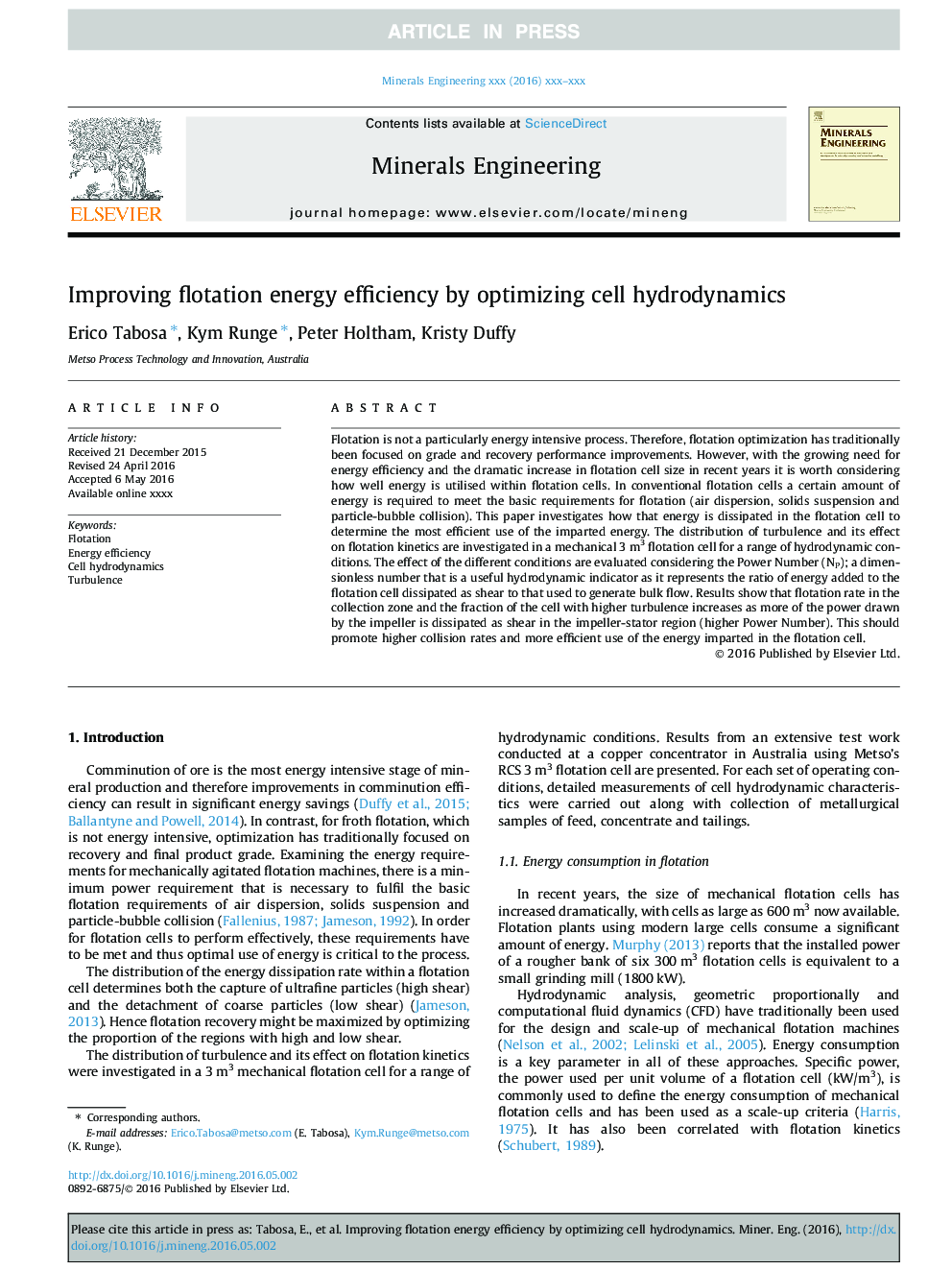| Article ID | Journal | Published Year | Pages | File Type |
|---|---|---|---|---|
| 4910346 | Minerals Engineering | 2016 | 9 Pages |
Abstract
Flotation is not a particularly energy intensive process. Therefore, flotation optimization has traditionally been focused on grade and recovery performance improvements. However, with the growing need for energy efficiency and the dramatic increase in flotation cell size in recent years it is worth considering how well energy is utilised within flotation cells. In conventional flotation cells a certain amount of energy is required to meet the basic requirements for flotation (air dispersion, solids suspension and particle-bubble collision). This paper investigates how that energy is dissipated in the flotation cell to determine the most efficient use of the imparted energy. The distribution of turbulence and its effect on flotation kinetics are investigated in a mechanical 3Â m3 flotation cell for a range of hydrodynamic conditions. The effect of the different conditions are evaluated considering the Power Number (NP); a dimensionless number that is a useful hydrodynamic indicator as it represents the ratio of energy added to the flotation cell dissipated as shear to that used to generate bulk flow. Results show that flotation rate in the collection zone and the fraction of the cell with higher turbulence increases as more of the power drawn by the impeller is dissipated as shear in the impeller-stator region (higher Power Number). This should promote higher collision rates and more efficient use of the energy imparted in the flotation cell.
Keywords
Related Topics
Physical Sciences and Engineering
Chemical Engineering
Chemical Engineering (General)
Authors
Erico Tabosa, Kym Runge, Peter Holtham, Kristy Duffy,
